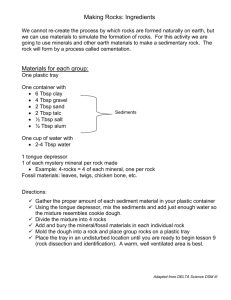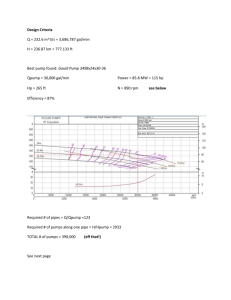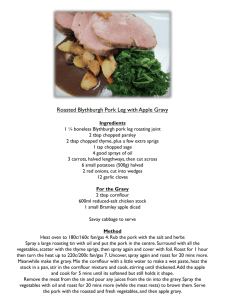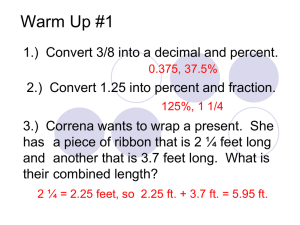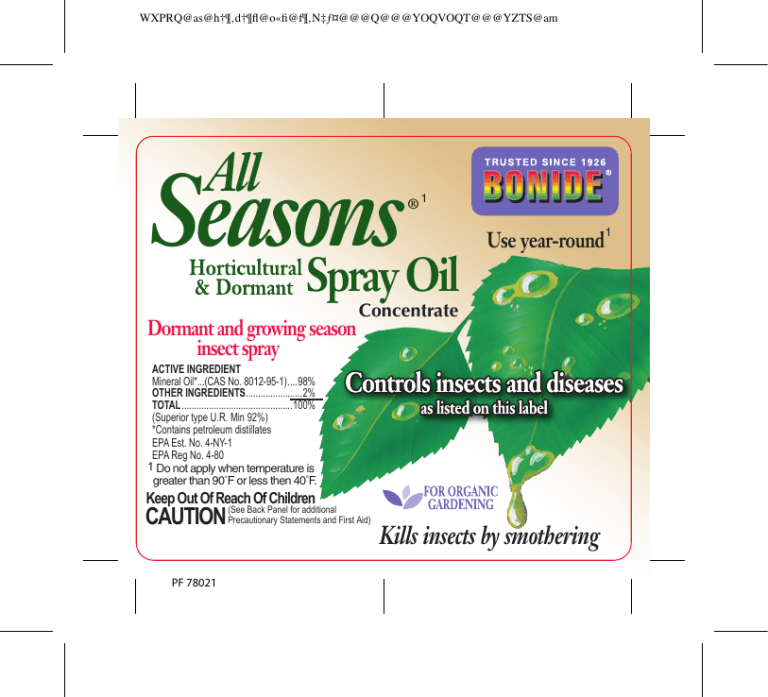
WXPRQ@as@h†¶‚d†¶fl@o«fi@f¶‚N‡ƒ¤@@@Q@@@YOQVOQT@@@YZTS@am
All
Seasons
Spray Oil
®1
Dormant and growing season
insect spray
ACTIVE INGREDIENT
Mineral Oil*...(CAS No. 8012-95-1)....98%
OTHER INGREDIENTS.......................2%
TOTAL.............................................100%
(Superior type U.R. Min 92%)
*Contains petroleum distillates
EPA Est. No. 4-NY-1
EPA Reg No. 4-80
1 Do not apply when temperature is
greater than 90˚F or less then 40˚F.
Use year-round
Concentrate
Controls insects and diseases
as listed on this label
Keep Out Of Reach Of Children
Back Panel for additional
Precautionary Statements and First Aid)
CAUTION (See
PF 78021
1
Kills insects by smothering
SEASONS®1
SPRAY OIL
ALL
HORTICULTURAL
& DORMANT
CONCENTRATE
3-in-1 product provides protection against insects, mites & diseases
listed on this label.
ALL SEASONS® HORTICULTURAL AND DORMANT SPRAY OIL is a selfemulsifying spray oil, composed of paraffinic oil with emulsifier and spreader
sticker, which envelop, wet and smother over wintering eggs of European
red spider mites, adelgids, scale insects, apple aphids, bud moth, leaf roller
(redbanded, obliquebanded, fruittree), light brown apple moth, red bug, codling
moth larvae, psylla (adults), blister mites, galls, whitefly larvae and mealybugs
on fruit trees, shade trees, vegetables, ornamentals, shrubs and roses.
CONTROLS scale insects, mealybugs, apple aphids, European red spider
mites, leafminers, leaf rollers (redbanded, obliquebanded, fruittree), light
brown apple moth, powdery mildew, rust and other insects and diseases
listed on this label. USE on pears, cherries, peaches, asparagus, corn,
peppers, roses, and other crops as directed on this label.
Controls insects and diseases as listed on this label.
1Do not apply when temperature is greater than 90°F or less than 40°F
Store and transport in an upright position.
EPA Est. No. 4-NY-1 EPA Reg. No. 4-80
©Bonide Products, Inc.
All Rights Reserved
Bonide Products, Inc.
6301 Sutliff Road
Oriskany, NY 13424
DIRECTIONS FOR USE
It is a violation of Federal law to use this product in a manner inconsistent
with its labeling.
Do not apply this product in any way that it will contact other persons or
pets, either directly or through drift. Keep other persons out of the treated
area during application. Do not allow persons or pets to enter the treated
area until sprays have dried.
NOTE: DO NOT APPLY ALL SEASONS® HORTICULTURAL AND
DORMANT SPRAY OIL WITH SULFUR SPRAYS OR WHERE SULFUR
IS ON THE FOLIAGE. TO DO SO MAY CAUSE FOLIAGE INJURY,
LEAF DROP. DO NOT APPLY ALL SEASONS® HORTICULTURAL AND
DORMANT SPRAY OIL AT ABNORMAL TEMPERATURES (ABOVE
90˚ F) OR WHEN PLANTS ARE DRY (SUFFERING FOR WANT OF
MOISTURE) AS IT MAY CAUSE LEAF DROP DUE TO “SHOCK.”
Mixture ratios vary. Read and use according to application directions. Apply
using a good pressure spray hose-end or watering can.
ALL SEASONS® HORTICULTURAL AND DORMANT SPRAY OIL may be
used at the DORMANT STAGE (before buds show green tissue), GREEN TIP
STAGE (when leaves of blossom buds are bursting and show about ⅛ to ¼
inch of green color), DELAYED DORMANT STAGE (when the leaves of the
blossom buds are out from ¼ to ½ inch), and during the GROWING SEASON.
SHAKE WELL. Then add ALL SEASONS® HORTICULTURAL AND
DORMANT SPRAY OIL to desired amount of water and mix thoroughly. Use
a good pressure spray and apply enough liquid per tree to wet entire surface
of branches, main limbs and trunk. Give special attention to underside of
limbs. Make application when the temperature is above 40˚ F.
2 Tablespoons = 1 fluid ounce
FRUIT, NUTS & BERRIES
PESTS
Aphids, Mites, Beetle
Larvae, Leafminers,
Thrips, Leafhopper,
Whitefly, Caterpillars,
Alternaria Leafspot,
Gummy Stem Blight,
Powdery Mildew, Rust
Cucumber Mosaic Virus,
Papaya Ringspot Virus,
Pepper Mottle Virus,
Potato Leafroll Virus,
Potato Virus Y, Tobacco
Etch Virus, Watermelon
Mosaic Virus 2, Zucchini
Yellow Mosaic Virus
Almonds Black Scale,
Apricots European Fruit
Cherries Lecanium Scale,
Nectarines Frosted Scale, Olive
Peaches Scale, San Jose
Pistachio Scale, Brown Mite
Eggs, European
Red Mite Eggs,
Aphid Eggs, Fruit
Tree Leafroller*
(Eggs), Wintering
Phytocoris* (only
on pistachio), Tent
Caterpillars*
CROP
Acerola
(Barbados
Cherry)*
Atemoya*
Carambola
(Star
Fruit)*
Rambutan*
TIMING & DILUTION RATE
Use 2 – 4 tbsp. of oil per 1
gal. of water.
Spray once or twice weekly
depending on the rapid
growth of the crop and/or
vector pressure
RESTRICTIONS
*Asterisk
denotes
crop,
pest not
approved in
California.
Use 2 tbsp. of oil per 1 gal.
of water.
Spray as needed.
DORMANT AND DELAYED
DORMANT:
Use 2.5 – 7.5 tbsp. of oil per
1 gal. of water.
European Fruit Lecanium
Scale and European Red
Mite Eggs: Apply from Green
Tip to Delayed Dormant.
San Jose Scale: Apply from Dormant,
Green Tip to Delayed Dormant.
Re-spray as needed.
For use on pistachio, apply as a
dormant treatment and/or trees
may be sprayed after harvest.
*Asterisk
denotes
crop,
pest not
approved in
California.
CROP PESTS
Terrapin Scale
TIMING & DILUTION RATE
DELAYED DORMANT:
Use 5 – 7.5 tbsp. of oil per 1 gal.
of water.
Cottony Peach
DORMANT:
Scale
Use 5 – 7.5 tbsp. of oil per 1 gal.
of water.
Powdery Mildew* Cherries:
(Cherries,
Use 2.5 – 5 tbsp. of oil per 1 gal.
Nectarines and
of water.
Peaches only)
Preharvest Use: Use up to pit
hardening stage. Apply at 10-14
day intervals – shorten interval
and/or use 5 tbsp. of oil per gal.
of water when disease conditions
are severe. Trees may be sprayed
after harvest to maintain control and
reduce overwintering inoculum.
Nectarines/Peaches:
Use 2.5 – 5 tbsp. of oil per 1 gal.
of water.
Begin at 5% bloom and continue
at 10-14 day intervals until
terminal growth phase stops. Do
not apply to oil sensitive varieties.
Scales, Two-spotted FOLIAR SPRAY:
Spider Mite, Pacific Use 1.5 – 4 tbsp. of oil per 1 gal.
Mite, European Red of water.
Mite, Brown Mite
Spray as needed.
RESTRICTIONS
*Asterisk
denotes not
approved for
this use on
Nectarines
and Peaches
in California.
CROP
Apples
PESTS
White Peach Scale
on Peaches: Only
for use in Georgia,
Florida, South
Carolina, North
Carolina, and
Alabama
TIMING & DILUTION RATE
RESTRICTIONS
DORMANT:
Use 4 – 5 tbsp. of oil per 1 gal.
of water. Apply before buds
begin to swell in the spring.
Make 2 applications 7-14 days
apart, or according to local
Cooperative Extension Service
recommendations, during the
dormant period.
DORMANT OR DELAYED
DORMANT:
Use 2.5 – 5 tbsp. of oil per 1
gal. of water.
European Fruit
Lecanium Scale,
Olive Scale,
San Jose Scale,
European Red
Mite Eggs, Rust
Rust Mite: Apply 4 – 5 tbsp. of
Mite, Rosy Apple oil per 1 gal. of water during
Aphid Eggs, Apple the delayed dormant timing.
Aphid Eggs
Codling Moth*
Restriction:
Use to control
first generation
early instar
stages only.
*Asterisk
denotes crop,
pest not
approved in
California.
CROP PESTS
Leafroller (red
banded, oblique
banded, fruit tree),
Apple Red Bug,
Scurfy Scale,
European Red
Mite, Bud Moth,
Light Brown Apple
Moth, Red Bug
San Jose Scale,
Forbes Scale
Powdery Mildew
Scales, Mites
including: Twospotted Spider Mite,
Pacific Red Mite,
European Red
Mite, Rust Mite,
Leafhopper*, San
Jose Scale, Rosy
Apple Aphid*, Fruit
Tree Leafroller*
TIMING & DILUTION RATE
GREEN TIP TO DELAYED
DORMANT:
Use 2.5 – 7.5 tbsp. of oil per 1 gal.
of water.
RESTRICTIONS
Re-spray as needed.
DORMANT, GREEN TIP TO
DELAYED DORMANT:
Use 2.5 – 5 tbsp. of oil per 1 gal. of water.
Spray as needed.
Use 2.5 – 5 tbsp. of oil per 1 gal. of water.
Apply at tight cluster and continue every
10-14 days through second cover spray.
Use 5 tbsp./gal. and/or shorter spray
interval when disease conditions
are severe.
FOLIAR SPRAY (Post Bloom):
Use 1 – 4 tbsp. of oil per 1 gal. of water.
For rust mite, summer use, use 2.5 – 4
tbsp. of oil per 1 gal. of water.
Apply every 10-14 days depending on
level of pest pressure. Trees may be
sprayed after harvest to maintain control
and reduce over-wintering pressure. Do
not apply oil to sensitive varieties.
*Asterisk
denotes
crop, pest
not approved
in California.
PESTS
CROP
Avocados Avocado Brown
Mite, Thrips,
Persea Mite
Bananas Black Leaf
Plantains Streak
(Mycosphaerella
fijiensis), Black
Sigatoka
(Mycosphaerella
fijiensis var.
difformis),
Yellow Sigatoka
(Mycosphaerella
musicola)
Blueberries
Bushberries
Caneberries
Raspberries
Mites, Powdery
Mildew, Rust,
Sawfly (eggs)*,
Scales*, Aphids,
Mealybug
TIMING & DILUTION RATE
Use 1.5 – 2.5 tbsp. of
oil per 1 gal. of water.
Apply through late fall.
RESTRICTIONS
California: Consult with your
local University of California
Cooperative Extension
Service for proper timing
Re-apply as needed. and application parameters.
Use 1.5 – 4 tbsp. of oil Restriction: Do not apply
per 1 gal. of water.
when daytime temperatures
exceed 80º F as injury
Begin application
may occur. Phytotoxicity
when disease first
may be affected by the
appears and continue quantity of oil used, vigor
every 10-15 days
of trees and temperature
during rainy periods or at the time of application.
as is needed.
Bag fruits, or use a directed
spray on unbagged fruits.
Bagged fruit improves crop
safety whereas unbagged
fruit may show phytotoxicity.
This application is also
effective in loosening
Sooty Mold Fungus
and in preventing its
formulation by the control
of Aphids, Mealybugs,
Scales and Whitefly.
Use 2 – 4 tbsp. of oil Spray for optimum
per 1 gal. of water.
coverage of leaf surfaces.
*Asterisk denotes crop,
Spray as needed.
pest not approved in
California.
CROP PESTS
Fig Scale
Figs
Mites,
Mealybug,
Scale
Grapes Mealybug,
Mites,
Leafhopper*,
Whiteflies*,
Powdery
Mildew,
Botrytis
TIMING & DILUTION RATE
RESTRICTIONS
DORMANT OR DELAYED
DORMANT: Use 2.5 – 7.5 tbsp.
of oil per 1 gal. of water.
Spray as needed.
Use 2. 5 – 5 tbsp. of oil per 1 gal. Apply as foliar
of water.
spray.
Use 2.5 – 7.5 tbsp. of oil per 1
Oil will remove the
gal. of water. Spray for optimum bloom on grapes.
coverage of leaf surfaces.
Restriction: Table
must not be
Repeat sprays every 10-14 days. grapes
within 60
For Powdery Mildew – Use 2.5 – sprayed
7.5 tbsp. of oil per 1 gal. of water. days of harvest.
Restriction: On
Make first application pre-bloom grapes, do not mix
and continue every ten days to oil and copper more
three weeks depending on level than once/season.
of disease pressure. Use 7.5
Restriction: Do not
tbsp./gal. and/or shorter spray
copper and oil
interval when disease conditions use
together with fruit
are severe.
present.
For Botrytis Bunch Rot – Use
2.5 – 5 tbsp. of oil per 1 gal. of
*Asterisk denotes
water. Initiate sprays at bloom
crop, pest not
and repeat prior to bunch closing approved in
and véraison. Final application at California.
harvest if needed. Use 5 tbsp./
gal. when disease conditions
are severe.
CROP PESTS
Latania Scale,
Kiwi
Greedy Scale,
Oleander
Scale, San
Jose Scale
Mango Mites,
Powdery
Mildew
TIMING & DILUTION RATE
Use 10 – 15 tbsp. of oil per 1 gal. of
water. Use 15 tbsp./gal. when scale
populations are high.
Spray as needed.
Do not apply after budbreak.
Use 2.5 – 4 tbsp. of oil per 1 gal. of water.
Apply every 2-3 weeks as necessary
depending on level of pest pressure.
For Powdery Mildew – Begin application
before bloom. Repeat at bloom and
every 2-3 weeks as necessary.
POSTBLOOM THROUGH AUGUST
Olives Olive
(Parlatoria) AND AFTER HARVEST: Use 2.5 – 4
Scale, Oleander tbsp. of oil per 1 gal. of water.
Scale, Black
Scale
Spray as needed.
Mites
PREBLOOM TO POSTBLOOM
BUCKSHOT:
Use 4 tbsp. of oil per 1 gal. of water.
Papaya Mites,
Powdery
Mildew,
Papaya
Ringspot
Virus
Spray as needed.
Use 2 – 4 tbsp. of oil per 1 gal. of water.
For Powdery Mildew and Mites: Spray
every 10-14 days depending on the
level of pest pressure.
For Virus: Spray weekly. Initiate spray
when seeds are germinated.
RESTRICTIONS
Restriction: Do
not use on weak
or stressed
vines, or where
soil moisture
is inadequate.
CROP PESTS
Pears European Fruit
Lecanium Scale,
Olive Scale, San Jose
Scale, European Red
Mite Eggs
Pear Psylla
Codling Moth*
TIMING & DILUTION RATE
RESTRICTIONS
DORMANT:
Use 2.5 – 5 tbsp. per 1 gal. of water.
Spray as needed.
Apply before eggs are laid in early spring.
Use to control first generation early *Asterisk
instar stages only.
denotes crop,
pest not
approved in
California.
DORMANT: Use 2.5 – 7.5 tbsp. of oil
per 1 gal. of water.
Fruit Tree
Leafroller, Pear
Leaf Blister Mite
Powdery Mildew Use 2.5 – 5 tbsp. of oil per 1 gal.
of water. Apply at bud burst and
continue every 10-14 days.
Scales, Twospotted Spider
Mite, Pacific Red
Mite, European
Red Mite, San
Jose Scale and
Italian Pear Scale
(Summer forms),
Leafhopper*,
Pear Psylla
Use 5 tbsp./gal. and/or 10-day spray interval
when disease conditions are severe.
FOLIAR SPRAY (Post Bloom):
Use 1 – 4 tbsp. of oil per 1 gal. of
water. Trees may be sprayed after
harvest to maintain control and
reduce over-wintering inoculum. Do
not apply oil to sensitive varieties.
*Asterisk
denotes crop,
pest not
approved in
California.
CROP PESTS
Pecans Scales, Aphids
(eggs), Mites
(eggs)
Pineapple Mealybugs, Bud
Moth, Chinese
Rose Beetle
Plums Black Scale,
Prunes European Fruit
Lecanium Scale,
Frosted Scale,
Olive Scale,
San Jose Scale,
Brown Mite Eggs,
European Red
Mite Eggs, Aphids
Eggs, Fruit Tree
Leafroller Eggs,
Tent Caterpillars*
Terrapin Scale
Cottony Peach
Scale
TIMING & DILUTION RATE
RESTRICTIONS
Use 5 – 7.5 tbsp. of oil per 1 gal.
of water. Use 5 tbsp. of oil in 1
gal. of water when trees are in a
weakened condition.
Apply from late February until buds
first break. Re-spray as needed.
Spray: Use 2.5 – 5 tbsp. of oil per Allow fruit to
1 gal. of water. Spray as needed. dry for 1 hour
before being
Dip: Use 2.5 – 5 tbsp. of oil per 1 stored.
gal. of water. Dip for 30 seconds.
DORMANT AND DELAYED
*Asterisk
DORMANT: Use 2.5 – 7.5 tbsp. denotes crop,
of oil per 1 gal. of water.
pest not
approved in
Preferred times of application
California.
for European Fruit Lecanium
Scale and European Red Mite
Eggs are Green Tip to Delayed
Dormant and for San Jose
Scale are Dormant, Green Tip to
Delayed Dormant.
Spray as needed.
DELAYED DORMANT: Use
5 – 7.5 tbsp. per 1 gal. of water.
Spray as needed.
DORMANT: Use 5 – 7.5 tbsp. per
1 gal. of water. Spray as needed.
RESTRICTIONS
Restriction:
Certain
varieties of
plums and
Trees may be sprayed after prunes may
harvest to maintain control be injured by
and reduce over-wintering oil sprays;
pressure. Do not apply oil check for
to sensitive varieties.
tolerance prior
to treatment.
Do not apply
to trees lacking
moisture.
2 tbsp. of oil per 1 gal. of
*Asterisk
Straw- Aphids*, Botrytis,
water. Spray as needed. denotes crop,
berries Leafminers*, Mites,
Powdery Mildew,
pest not
Sawfly, Scale,
approved in
Whiteflies
California.
DELAYED DORMANT: Use Restrictions:
Walnuts Black Scale, Calico
Scale, European
10 – 15 tbsp. of oil per 1
Do not apply
Fruit Lecanium Scale, gal. of water.
after husk split.
Frosted Scale, Olive
Do not spray
Scale, San Jose
Spray as needed.
oil on sensitive
Scale, European Red
varieties.
Mite Eggs, Walnut
Aphid Eggs
Spider Mites, Soft
SUMMER FOLIAR: Use 10
Scales
– 15 tbsp. of oil per 1 gal. of
water. Spray as needed.
CROP
PESTS
Two-spotted Spider
Mite, Pacific Mite,
European Red Mite,
Brown Mite
TIMING & DILUTION RATE
FOLIAR SPRAY: Use 1.5
– 4 tbsp. of oil per 1 gal. of
water. Spray as needed.
CITRUS (California Only)
Do not exceed a maximum of 4.8 pounds active ingredient per 1,000
square feet in California.
CROP
Grapefruit
Lemons
Limes
Oranges
(Navel &
Valencia)
Tangelos
Tangerines
Other
citrus
hybrids
PESTS
Mites: Citrus
Bud, Citrus
Flat, Citrus
Red, Citrus
Rust
Scales: Black,
Brown Soft,
California
Red, Citricola,
Purple,
Yellow, Red
TIMING & DILUTION RATE
Central California:
Use 1.5 – 4 tbsp. of oil per 1 gal.
of water.
Lemons and Limes: make
applications in all months except
December through February.
Grapefruit: make applications July
through October.
Navel Oranges: make applications
July through September.
Valencia Oranges, Tangelos, Tangerines
and other citrus hybrids: make
applications July through October.
Spray as needed.
Mites: Citrus Southern California:
Bud, Citrus
Use 1.5 – 4 tbsp. of oil per 1 gal.
Flat, Citrus
of water.
Red, Citrus Coastal Lemons and Limes: apply
Rust
May and June and/or September
Scales: Black, through December.
Brown Soft, Interior Lemons and Limes:
apply in April and May and/or
California
Red, Citricola, September through November.
Purple,
Grapefruit: make applications July
Yellow, Red through October.
RESTRICTIONS
Restriction:
Do not apply
prior to or
during a
period of
excessively
high
temperatures.
Do not apply
oil spray when
trees show
stress.
Consult with
your local
University
of California
Cooperative
Extension
Specialist for
proper timing
and spray
program.
CROP PESTS
TIMING & DILUTION RATE
RESTRICTIONS
Navel Oranges: make
applications July through
September.
Valencia Oranges, Tangelos,
Tangerines and other citrus
hybrids: make applications July
through October.
Spray as needed.
Mites: Citrus
Oxnard Plains Area:
Bud, Citrus Flat, Use 1.5 – 4 tbsp. of oil per 1
Citrus Red,
gal. of water.
Citrus Rust
Make applications as needed
Scales: Black,
throughout the year.
Brown Soft,
California Red,
Citricola, Purple,
Yellow, Red
CITRUS (Florida and Texas)
Do not exceed a maximum of 3.6 pounds active ingredient per 1,000
square feet in Texas and Florida.
CROP
PESTS
Citrons,
Grapefruits,
Lemons,
Limes,
Mandarins,
Oranges,
Tangelos,
Tangerines
Other citrus
hybrids
DO NOT
APPLY TO
NAVEL
ORANGES.
Citrus Rust Mite,
Spider Mites,
Bud Mites, Flat
Mites.
Scales: Black
Soft, Brown
Soft, Chaff,
Glover, Purple,
Red, Yellow
TIMING & DILUTION
RATE
Use 1.5 – 4 tbsp.
of oil per 1 gal. of
water.
RESTRICTIONS
Precautions in the use of
oil include: Do not apply
oil spray when trees are
wilting. Do not apply oil
Summer spray
and sulfur within 3 weeks
only. Re-spray as of each other. Sensitive
needed.
foliage may be injured.
In Florida, consult the
Florida Citrus Spray and
Dust Schedule, or your
Does not
Agricultural Experiment
control Citrus
Station or State Extension
Snow Scale.
Service Specialist for
Whitefly,
complete details on the
Blackfly
spraying program best
Greasy Spot
suited to your locale. In
(Grapefruit)
Texas, consult with your
Greasy Spot (all
Agricultural Experiment
other varieties)
Station or State Extension
Specialist for complete
details on the spraying
program suited to your
locale.
Loosening sooty
Use 4 tbsp./gal. when
mold
disease pressure is heavy.
CROP
VEGETABLE GARDENS
Asparagus, Beans, Beets,
Broccoli, Chinese Broccoli,
Broccoli Raab, Brussels
Sprouts, Cabbage, Cauliflower,
Chinese Cabbage (Bok Choy and
Mapa), Chinese Mustard Cabbage
(Gai Choy), Cavalo Broccoli,
Collards, Kale, Kohlrabi, Mizuna,
Mustard Greens, Mustard Spinach,
Rape Greens, Celery, Chayote,
Chinese Waxgourd, Citron Melon,
Cucumber, Gherkin, Hyotan,
Cucuzza, Hechima, Chinese Okra,
Balsam Apple, Balsam Pear, Bitter
Melon, Chinese Cucumber, True
Cantaloupe, Cantaloupe, Casaba,
Crenshaw Melon, Golden Pershaw
Melon, Honeydew Melon, Honey
Galls, Mango Melon, Persian
Melon, Pumpkin, Summer Squash,
Winter Squash, Watermelon,
Dasheen (Taro)*, Eggplant,
Ginger*, Ginseng*, Herbs and
Spices* (Curly Leaf Basil, Lemon
Balm), Japanese Radish (Daikon)*,
Lettuce, Okra*, Peppers, Potatoes,
Radishes, Sweet Potatoes
PESTS
Aphids, Mites,
Beetle Larvae,
Leafminers,
Thrips,
Leafhopper,
Whitefly,
Alternaria
Leafspot,
Gummy Stem
Blight, Powdery
Mildew, Rust
TIMING &
DILUTION
RATE
Use 2 – 4
tbsp. of oil
per 1 gal.
of water.
Spray once
or twice
weekly
depending
on the rapid
growth
of the
crop and/
or vector
pressure.
Use 2
tbsp. of oil
per 1 gal.
of water.
Cucumber
Mosaic Virus,
Papaya Ringspot
Virus, Pepper
Mottle Virus,
Potato Leafroll Spray as
Virus, Potato needed.
Virus Y, Tobacco
Etch Virus,
Watermelon
Mosaic Virus 2,
Zucchini Yellow
Mosaic Virus.
RESTRICTIONS
*Asterisk
denotes
crop, pest not
approved in
California.
CROP
PESTS
Chinese
Artichoke*
(Japanese
Artichoke),
Cilantro*,
Herbs and
Spices*
(Mexican
Oregano,
Mint)
Corn
(Sweet)
Aphids, Mites, Beetle Larvae,
Leafminers, Thrips, Leafhopper,
Whitefly, Alternaria Leafspot, Gummy
Stem Blight, Powdery Mildew, Rust,
Pepper Psyllids, Cucumber Mosaic
Virus 2, Papaya Ringspot Virus,
Pepper Mottle Virus, Potato Leafroll
Virus, Potato Virus Y, Tobacco Etch
Virus, Watermelon Mosaic Virus
2, Zucchini Yellow Mosaic Virus
Aphids, Mites, Leafhopper*,
Leafminers, Corn Earworm,
Rootworm, Armyworm, Whitefly,
Cercospora*
TIMING &
DILUTION RATE
Use 2.5 – 5
tbsp. of oil per
1 gal. of water.
Spray once or
twice weekly
depending on the
rapid growth of
the crop and/or
vector pressure.
Use 2.5 – 5
tbsp. per 1 gal.
of water.
Spray as
needed.
Use 2 – 4 tbsp.
Tomatoes Aphids, Mites, Beetle Larvae,
Leafminers, Thrips, Leafhopper, of oil per 1
Whitefly, Alternaria Leafspot,
gal. of water.
Gummy Stem Blight, Powdery Spray once or
Mildew, Rust, Tomato Psyllid*,
twice weekly
Tomato Pin Worm*, Fruit Worm*,
depending
Army Worm*, Horn Worm*,
on the rapid
Lygus Bug*, Stink Bug*,
growth of the
Cucumber Mosaic Virus, Papaya crop and/
Ringspot Virus, Pepper Mottle
or vector
Virus, Potato Leafroll Virus, Potato pressure.
Virus Y, Tobacco Etch Virus,
Watermelon Mosaic Virus 2,
Zucchini Yellow Mosaic Virus
RESTRICTIONS
*Asterisk
denotes crop,
pest not
approved in
California.
*Asterisk
denotes crop,
pest not
approved in
California.
*Asterisk
denotes crop,
pest not
approved in
California.
ROSES, FLOWERING SHRUBS & ORNAMENTALS
TIMING & DILUTION RATE RESTRICTIONS
Aphids, Adelgids, Eriophyid Winter Dormant Period:
Mites, Gall Mites, Honey Use 5 – 7.5 tbsp. of oil per 1
Locust Plant Bug, Lace gal. of water.
Bug, Leaf Beetle Larvae, Summer (Foliar or Cover):
Leafminer (nonUse 2 – 5 tbsp. of oil per 1
larvae), Leafrollers, gal. of water.
Mealybugs, Psyllids
(immature), Red Mites, For blackspot and powdery
Sawfly (larvae), Scales mildew control during the
(immature), Spider Mites, summer do not exceed
Webworms, Whiteflies, 4 tbsp. of oil per 1 gal.
Blackspot, Powdery of water.
Mildew, Young Caterpillars Spray as needed.
Winter Dormant Period:
Application
Foliage Aphids, Adelgids
Use 5 – 7.5 tbsp. of oil per 1 safety during
Ornagal. of water.
bloom period
mentals &
must be
Bedding
Summer (Foliar or Cover): determined for
Plants
Use 2 – 5 tbsp. of oil per 1 each individual
gal. of water.
species of plant
to be treated
Spray as needed.
by conducting
a small test.
Use 2.5 – 5 tbsp. of oil per 1 gal.
Non-Fruit- Mites
of water. Apply every 10-14 days.
Bearing
Use 2.5 – 5 tbsp. of oil per 1 gal. of
Trees: Apple, Powdery Mildew
water. Spray before disease first
Cherry,
appears. Apply every 10-14 days.
Peach, Pear
PLANT
Flowering
and
Foliage
Plants
including
Roses
and Other
Flowering
Shrubs
PESTS
PLANT
PESTS
TIMING &
DILUTION RATE
Aphids, Adelgids, Winter Dormant
Eriophyid Mites, Period:
Gall Mites,
Use 5 – 7.5
Hemlock Woolly tbsp. of oil per 1
Adelgids, Honey gal. of water.
Locust Plant
(Foliar
Bug, Lace Bug, Summer
or Cover):
Leaf Beetle
2 – 5 tbsp.
Larvae, Leafminer Use
of oil per 1 gal.
(non-larvae),
of water.
Leafrollers,
Mealybugs,
For blackspot
Psyllids
and powdery
(immature), Red mildew control
Mites, Sawfly
during the
(larvae), Scales summer, do not
(immature), Spider exceed 5 tbsp.
Mites, Webworms, of oil per 1 gal.
Whiteflies,
of water.
Blackspot,
as
Powdery Mildew, Spray
Young Caterpillars needed.
RESTRICTIONS
Restriction: Do not spray
when there is obvious moisture
deficit in leaves, or the plant
is under stress. For fall dormant
applications, reduce rate to 5
tbsp. of oil per 1 gal. of water
and limit use only to: American
Red Oak, Japanese Black Pine,
Dogwood, Weeping Cherry,
Cornelian Cherry, Crabapple,
Norway Maple, Purple Plum.
Restriction: This product may
cause discoloration of Blue
Spruce. Do not use on conifers
or ferns not tolerant to oil sprays
(e.g. Alberta Dwarf Spruce).
Use enough spray solution to
completely penetrate the leaf
canopy and cover both top
and bottom of all the leaves
and stems until wet but
without significant runoff.
Use the lowest concentration indicated in the above table if sensitive plants are to be treated.
**This product removes the glaucous (blue) bloom from such evergreens as
Colorado Blue Spruce and Koster Spruce.
Always use most dilute concentration indicated in the preceding table for the
type of plant to be treated or test spray oil sensitive plants such as Cryptomeria,
Smoke Tree, Chamaecypris, Juniper, Japanese Holly and Spruce.
Tendency toward sensitivity: Red Cedar and Douglas Fir.
Shade
Trees**
Ornamental
Trees**
Shrubs
(including
Conifers,
Deciduous
and
Broadleaf
Evergreens
& Woody
Ornamentals)
HOBBY GREENHOUSES
Frequency of Application: Use once a week initially, then as the pest is
controlled, decrease the frequency to every 2-3 weeks as needed. Application
safety during bloom period must be determined for each individual species of
plant to be treated by conducting a small test.
PESTS
TIMING &
RESTRICTIONS
PLANT
DILUTION RATE
Aphids,
Summer (Foliar Due to varietal
Ageratum,
Fungus Gnats, or Cover):
differences in response
Crown of Thorns,
Leafminers, Use 1.5 – 2.5 to a treatment of
Dieffenbachia,
Mealybugs, tbsp. of oil per 1 this product at the
Dogwood*,
Scales (soft & gal. of water.
labeled rate, conduct
Dracaena*, Ferns,
hard), Spider
a small test on 1 or 2
Ficus, Holly*,
plants of the specific
Lisianthus, Magnolia*, Mites, Thrips, Spray as
Whitefly,
needed.
variety to be treated.
Orchid, Palms,
Petunia, Poinsettia, Powdery
Some plants are
Schefflera, Sunflower Mildew*
more sensitive to oil
Aphids,
Summer (Foliar treatments if any of the
Aglaonema, Aster,
or Cover):
Azaleas, Begonias, Fungus
following conditions
Use 2.5 – 5
Browallia, Camellias, Gnats,
are present when
Carnation, Celosia, Leafminers, tbsp. of oil per 1 application is made:
Mealybugs, gal. of water.
Chrysanthemum,
high humidity (74%),
Scales (soft &
Coleus, Cosmos,
an overcast or cloudy
hard), Spider Spray as
Crepe Myrtle*,
day, inadequate
Dusty Miller, Easter Mites, Thrips, needed.
air flow, a small
Whitefly,
Lilies, Fuchsia*,
greenhouse where the
Gardenias, Gerbera, Powdery
sunlight is magnified
Mildew*
Hellichrysum,
causing a fast buildHibiscus Foliage,
up of temperature and
Hydrangea,
light intensity.
PESTS TIMING & DILUTION RATE
PLANT
Impatiens*, Jade Plant,
Marigold, New Guinea
Impatiens, Nicotonia,
Philodendron, Portulaca,
Reiger Begonias,
Snapdragon, Zinnias
Use 2.5 tbsp. of oil per
Leaf Polish for Hardy Plants
1 gal. of water.
HOUSEPLANTS
DILUTION RATE RESTRICTIONS
per 1 Gallon Water
2.5 – 5.0 Tbs. Protect floor, floor
Chrysanthemum, Aphids,
Dieffenbachia, Leafminers, (1¼-2½ fl. oz.) coverings and furnishings
Mealybugs,
from overspray.
Dracaena,
Scales,
Do not exceed 3
Ferns,
Spider
consecutive applications
Gardenias,
Mites,
without allowing a two week
Jade Plant,
Whitefly*
application interval.
Palms,
Do not apply to plants in
Philodendron,
direct sunlight behind glass.
Schefflera
Do not use on Coconut
Palms or Maidenhair Ferns.
Chrysanthemum blooms have
shown phytotoxic symptoms
at 5.0 Tbs. per gallon of water.
*All Seasons® Horticultural
and Dormant Spray Oil is
most effective on Whitefly
during immature stages.
PLANT
PESTS
RESTRICTIONS
*Asterisk
denotes crop,
pest not
approved in
California.
FOR HOUSEPLANTS AND HOBBY GREENHOUSES
• Do not exceed the maximum rates or apply more often than indicated on this label.
• Certain plant species may be sensitive to oil. A small number of plants should
be test sprayed prior to general spraying.
• Use caution on open blooms – bleaching and spotting have been observed on
the open bloom of certain plants.
STORAGE AND DISPOSAL
Do not contaminate water, food or feed by storage or disposal.
Pesticide Storage: Store and transport in an upright position. Keep
container tightly closed to prevent evaporation. Do not use, pour, spill or
store near heat or open flame. Store in a cool, dry area inaccessible to
children or pets. Pesticide Disposal: If partly filled - Call your local solid
waste agency for disposal instructions. Never place unused product
down any indoor or outdoor drain. Container Disposal: If empty Nonrefillable container. Do not reuse or refill this container. Place in trash
or offer for recycling if available.
FIRST AID
Have the product container or label with you when calling a poison
control center or doctor, or going for treatment. You may also contact the
National Pesticide Information Center at 1-800-858-7378 for emergency
medical treatment information.
If in • Hold eye open and rinse slowly and gently with water for 15-20
Eyes: minutes.
• Remove contact lenses, if present, after the first 5 minutes, then
continue rinsing eye.
• Call a poison control center or doctor for treatment advice.
Note to Physician: This product contains petroleum distillates and may
pose an aspiration pneumonia problem.
PRECAUTIONARY STATEMENTS
HAZARDS TO HUMANS AND DOMESTIC ANIMALS
CAUTION: Causes moderate eye irritation. Avoid contact with eyes or
clothing. Wash thoroughly with soap and water after handling and before
eating, drinking, chewing gum or using tobacco. Wear long-sleeved shirt,
long pants, shoes, socks and waterproof gloves when using or handling
this product.
ENVIRONMENTAL HAZARDS
This product is toxic to fish. To protect the environment, do not allow
pesticide to enter or run off into storm drains, drainage ditches, gutters
or surface waters. Applying this product in calm weather when rain is not
predicted for the next 24 hours will help to ensure that wind or rain does
not blow or wash pesticide off the treatment area. Rinsing application
equipment over the treated area will help avoid run off to water bodies
or drainage systems. Apply this product only as specified on the label.
For information on pesticide products (including health concerns, medical
emergencies, or pesticide incidents), call the National Pesticide Information
Center at 1-800-858-7378.
WARRANTY
Seller warrants that this product complies with the specifications expressed in
this label. To the extent consistent with applicable law, Seller makes no other
warranties, and disclaims all other warranties, express or implied, including but
not limited to warranties of merchantability and fitness for the intended purpose.
To the extent consistent with applicable law, Seller’s liability or default, breach
or failure under this label shall be limited to the amount of the purchase price.
To the extent consistent with applicable law, Seller shall have no liability for
consequential damages.



